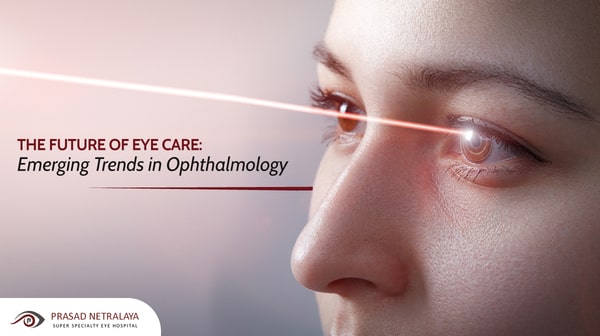The Benefits And Drawbacks of Various Refractive Surgical Procedures for Improved Eyecare

LASIK Surgical Treatment
LASIK surgery is a typically done refractive treatment that aims to deal with vision issues such as farsightedness, astigmatism, and nearsightedness. Throughout the treatment, a thin flap is created on the cornea, and a laser is utilized to improve the underlying tissue, remedying the refractive error.
One of the main advantages of LASIK surgery is the fast improvement in vision experienced by numerous individuals. It is important for people thinking about LASIK surgical procedure to undertake a comprehensive evaluation by an eye care professional to establish if they are appropriate prospects for the procedure.
PRK Procedure
The PRK procedure, additionally referred to as Photorefractive Keratectomy, is a kind of refractive surgery that aims to correct vision problems comparable to LASIK surgical procedure. Unlike LASIK, which involves developing a flap in the cornea, PRK services the surface area layer of the cornea. Throughout the PRK treatment, the external layer of the cornea, called the epithelium, is eliminated to enable improving of the underlying corneal cells with an excimer laser. This improving helps to correct refractive mistakes such as astigmatism, nearsightedness, and farsightedness.
Among the benefits of PRK over LASIK is that it gets rid of the threat of flap-related complications since no flap is created during the surgical treatment. This can be helpful for people with slim corneas or those included in contact sporting activities where eye injury is an opportunity. Nevertheless, the recovery time for PRK is normally longer compared to LASIK, as the outer layer of the cornea needs time to regenerate after the treatment. Regardless of the longer healing period, PRK can be an appropriate option for individuals seeking vision correction surgery.
SMILE Surgical Treatment
An advanced refractive surgery strategy getting popularity in the area of ophthalmology is SMILE Surgical procedure. Small Laceration Lenticule Extraction (SMILE) is a minimally intrusive treatment that fixes vision by reshaping the cornea using a femtosecond laser. Unlike standard LASIK surgery, SMILE Surgical treatment involves creating a tiny incision in the cornea to remove a lenticule, which results in much less disturbance to the corneal framework and potentially quicker recovery times.
Among the primary benefits of SMILE Surgical procedure is its capability to treat nearsightedness (nearsightedness) and astigmatism with high accuracy, resulting in excellent visual results for individuals. The minimally intrusive nature of the procedure additionally decreases the danger of difficulties such as read the article dry eye syndrome, making it a desirable choice for people looking for refractive surgical treatment.

LASEK Strategy
Having explored the advantages and factors to consider of SMILE Surgical treatment, one more notable refractive surgery strategy worth taking a look at is the LASEK Method. LASEK, which represents Laser-Assisted Subepithelial Keratectomy, is a type of laser eye surgical treatment that intends to correct refractive mistakes such as myopia (nearsightedness), hyperopia (farsightedness), and astigmatism.
Unlike LASIK, LASEK does not include creating a corneal flap. Rather, throughout a LASEK procedure, the doctor makes use of a watered down alcohol option to loosen up the slim external layer of the cornea, known as the epithelium.
One of the key advantages of LASEK is that it can be suitable for people with slim corneas that may not be excellent candidates for LASIK. Furthermore, LASEK normally leads to marginal post-operative discomfort and a quicker recovery time compared to PRK. Nevertheless, the visual recuperation process with LASEK might be somewhat longer than with LASIK.
Implantable Get In Touch With Lenses
Implantable Get in touch with Lenses supply a long-lasting vision improvement solution for individuals looking for an alternative to traditional get in touch with lenses or glasses. These lenses, likewise understood as phakic intraocular lenses, are surgically put into the eye to fix refractive errors such as myopia (nearsightedness), hyperopia (farsightedness), and astigmatism. neurologist Andalusia. Unlike conventional call lenses that rest on the surface of the eye, implantable call lenses work within the eye itself, supplying clear vision without the need for daily maintenance or elimination
Among the vital benefits of implantable get in touch with lenses is their durability. When put, they can remain in the eye indefinitely, providing consistent and steady vision adjustment. Additionally, these lenses can be a superb option for individuals who are bad prospects for laser eye surgery or who like a relatively easy to fix vision correction treatment.
Nevertheless, implantable get in touch with lenses do bring some threats, including the potential for cataracts or boosted eye stress. It is essential for individuals considering this choice to talk to an eye care professional to figure out if implantable contact lenses are the appropriate selection for their details demands and eye wellness.
Verdict
Finally, each sort of refractive surgical treatment has its own advantages and drawbacks. LASIK surgical procedure is preferred for its fast healing time, while PRK procedure might appropriate for patients with slim corneas. SMILE surgical procedure uses minimal pain during have a peek at these guys the procedure, yet LASEK strategy may have a longer healing procedure. Implantable get in touch with lenses provide an alternative for those that are not ideal prospects for standard surgical procedures. Individuals need to consult with their go to these guys eye treatment service provider to figure out the best option for their individual demands.

In General, SMILE Surgical procedure offers an appealing alternative for individuals looking to boost their vision with refractive surgical procedure.
Comments on “Andalusia Pediatrics: Compassionate Take Care Of Your Children”